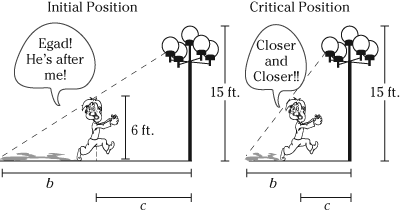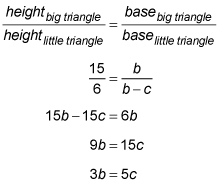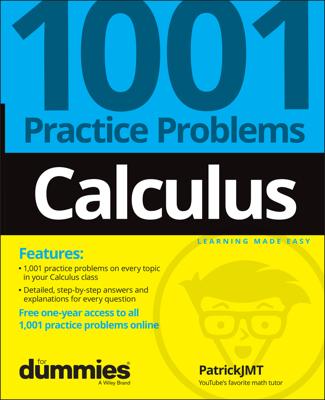Related rates problems are the Waterloo for many a calculus student. The best way to get the hang of them is by working through lots of examples, like this moving shadow question.
Practice question
A 6-foot tall man looking over his shoulder sees his shadow that's cast by a 15-foot-tall lamppost in front of him. The shadow frightens him so he starts running away from it — toward the lamppost. Unfortunately, this only makes matters worse, as it causes the frightening head of the shadow to gain on him. He starts to panic and runs even faster. Five feet before he crashes into the lamppost, he's running at a speed of 15 miles per hour. At this point, how fast is the tip of the shadow moving?
Answer and explanation
It's moving at 25 miles per hour.
Start by doing the diagram thing:

Now, list the known and unknown rates.

You can now write a formula that connects the variables.
This is a similar triangle situation. Note: For your two similar triangles, you can use either one of these figures, but not both of them.

Differentiate with respect to t.

Finally, substitute known values.

Thus, the top of the shadow is moving toward the lamppost at 25 miles per hour (and is thus gaining on the man at a rate of 25 – 15 = 10 miles/hour).
A somewhat unusual twist in this problem is that you never had to plug in the given distance of 5 feet. This is because the speed of the shadow is independent of the man's position.

